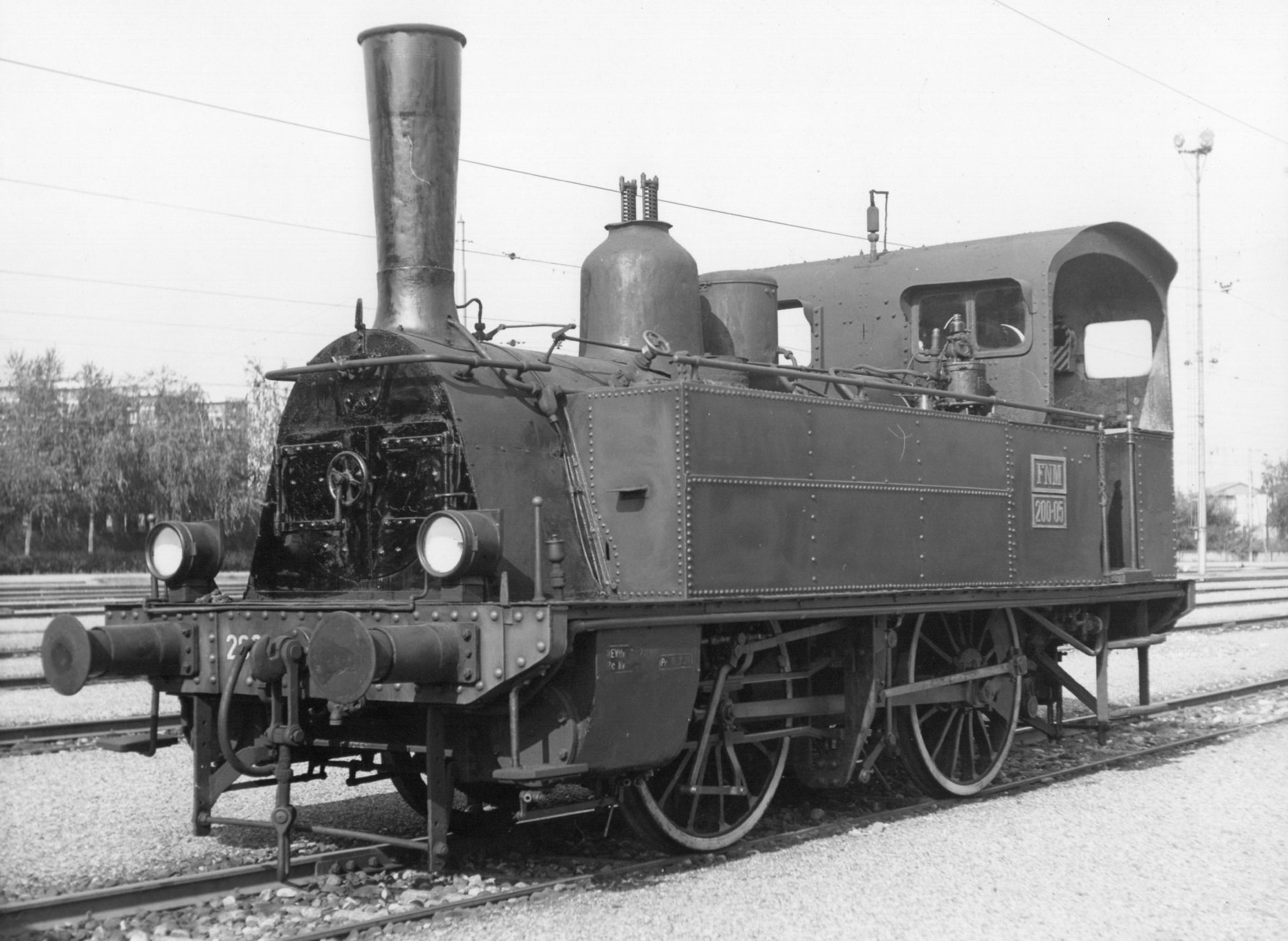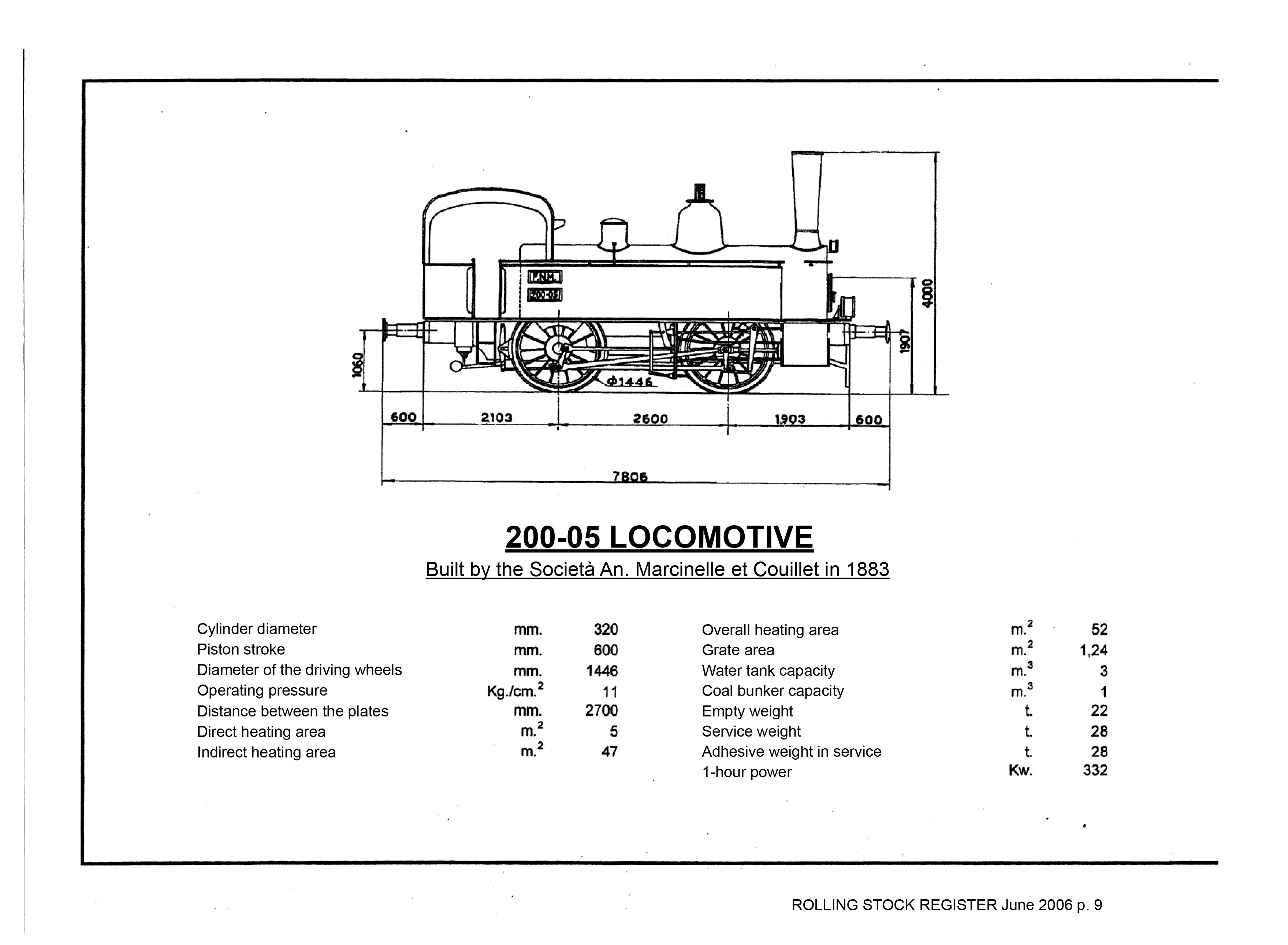The Class 200 steam locomotives were a batch of 7 units numbered 200-206 built by Belgian company Couillet in Marcinelle, a suburb of Charleroy, in 1883. The locomotives were ordered by the Società Anonima Ferrovia del Ticino for operation on the Saronno – Malnate and Grandate – Malnate sections. They were 2-coupled axles saturated steam tank locomotive (UIC wheel arrangement Bn2t) saturated steam tank locomotives with twin cylinder engine, Walschaerts valve gear, and flat slide valves. The 1,446 mm diameter of the wheels allowed a maximum speed of 60 km/h. 287 kW power.
The entire group of locomotives was added to the FNM rolling stock in 1888, following a contract between Ferrovie Nord and S. A. Ferrovie del Ticino for the operation of the latter’s lines. Three locomotives were withdrawn in the 1930s. In 1971 another two were withdrawn and scrapped, while another was preserved by Saronno-based Lazzaroni. The 200-05 remained in shunting service until 1973. Following careful restoration, it has been a historic FNM train since 28 September 1974.


